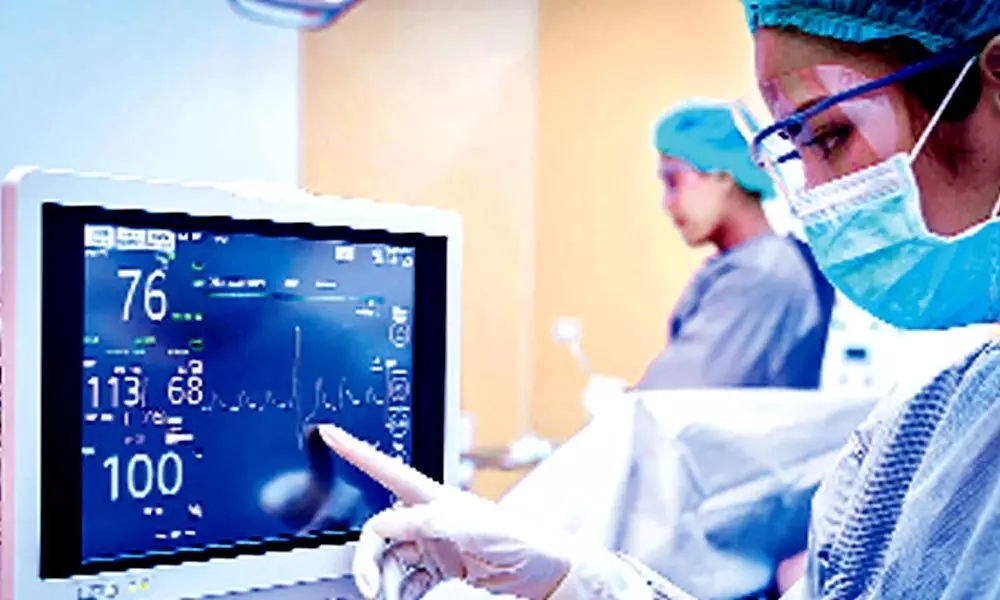Will this policy make India 'diagnostic capital of the world'?
DoP has recently released the draft National Policy for Medical Devices which is primarily aimed to reduce India's dependence on import of high-end medical device
image for illustrative purpose

For the sunrise sector of Medical Devices, popularly called as MedTech sector, there was a dire need for the policy intervention by the government. India's medical devices sector has so far been regulated as per provisions under the Drugs and Cosmetics Act of 1940, and a specific policy on medical devices has been a long standing need of the industry. Will the new policy position India as the 'diagnostic capital of the world' just as India is known as 'the pharmacy of the world'? Only time will tell
For making the country self-reliant in the pharmaceutical sector, the Department of Pharmaceuticals (DoP) under the Union Ministry of Chemicals & Fertilizers, in consultation with the Indian government's policy think-tank NITI Aayog, had come out with several schemes including financial incentive schemes like the production linked incentive (PLI) scheme for promotion of domestic manufacturing of critical Key Starting Materials (KSMs), Drug Intermediates (DIs) and active pharmaceutical ingredients (APIs) in India.
Though the country has, over the years, adorned the epithet of 'the pharmacy of the world' as it has been exporting life-saving medicines to the entire world, including developed nations, India has been critically dependent on imports for basic raw materials that are used to produce some of the essential medicines. By introducing these schemes, the Indian government wanted to end this scenario.
After taking these initiatives in the pharmaceutical sector to make India self-reliant in production of essential medicines, the central government now wanted to position the country as the true 'Diagnostic Capital of the World'. It is in this direction, the DoP has recently released the draft National Policy for Medical Devices which is primarily aimed to reduce India's dependence on import of high-end medical devices. At present, nearly 80 per cent of the medical devices sold in the country are imported, particularly the high-end medical devices. The Indian medical devices companies have so far typically focussed on low-cost and low-tech products, like consumables and disposables, leading to a higher value share going to multinational companies, especially the US-based companies.
With the new policy, the government aims to reduce India's import dependence from 80 per cent to nearly 30 per cent in the next 10 years, and become one of the top five global manufacturing hubs for medical devices by 2047. In the approach paper to the draft National Policy for Medical Devices, the DoP has proposed adopting public-private partnerships to reduce the cost of healthcare, drive efficiency, and aid quality improvements in medical devices manufactured in the country. The policy has also proposal for enabling a pricing environment with no price control on newly developed innovation in the sector.
The new policy aims to incorporate a framework for a coherent pricing regulation, and the National Pharmaceutical Pricing Authority (NPPA) will be strengthened with adequate manpower of suitable expertise to provide effective price regulation balancing the patient and industry needs and incorporating innovation and life cycle costs as factors pricing regulation of medical devices. The government also proposes implementation of a Uniform Code for Medical Devices Marketing Practices (UCMDMP). Setting up of medical devices parks with common infrastructure facilities will also be a part of the policy and it also proposes to develop additional NABL accredited laboratories for medical device testing, amongst other infrastructure development supports. The new policy proposes to allot a dedicated fund for encouraging joint research with industry players, academic institutions, small and medium enterprises, and start ups for research and development activities targeted at leveraging state-of-the-art technology for domestic manufacturing of medical equipment and to support consortiums comprising industry, academics, startups and SMEs, to undertake joint R&D projects with pre-defined agreements around intellectual property related issues.
The policy also proposes to promote industry-academia linkage and innovation hubs, Centres of Excellence (CoEs) in premier academic and research institutions, purposeful investment in few priority institutes to build CoEs focusing on medical technology innovation and R&D, among others. For human resources development, the policy envisages to set up National Institutes of Medical Devices Education and Research (NIMERs) exactly on the lines of National Institutes of Pharmaceutical Education and Research (NIPERs), as institutes of National Importance. There is proposal for formulating a National Registry for priority which correlates to skills required in production of specific technologies and will maintain a databank having details related to latest technology and the skill required to do the production, and financing of such skills through hands-on trainings, internships/training in specialised industry locations at par with Junior Research Fellow stipends made available by UGC to the government universities.
For the sunrise sector of Medical Devices, popularly called as MedTech sector, there was a dire need for the policy intervention by the government. India's medical devices sector has so far been regulated as per provisions under the Drugs and Cosmetics Act of 1940, and a specific policy on medical devices has been a long standing need of the industry. Will the new policy position India as the 'diagnostic capital of the world' just as India is known as 'the pharmacy of the world'? Only time will tell.
(The author is freelance journalist with varied experience in different fields)

